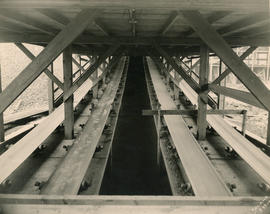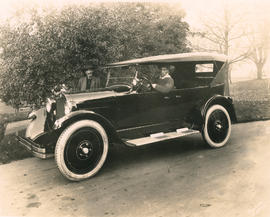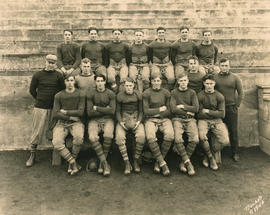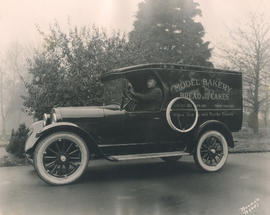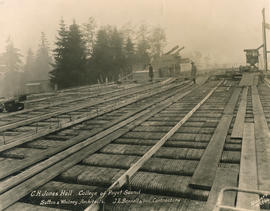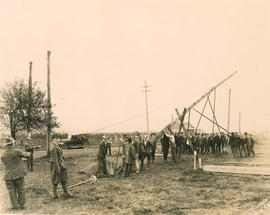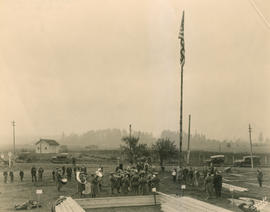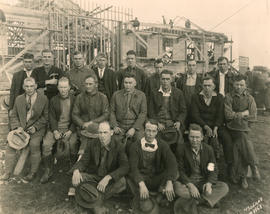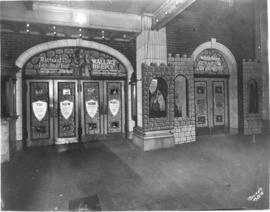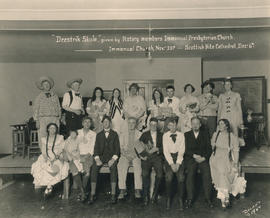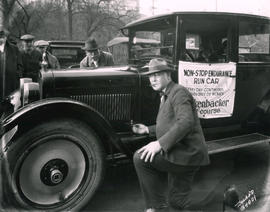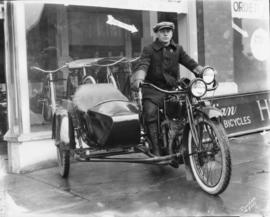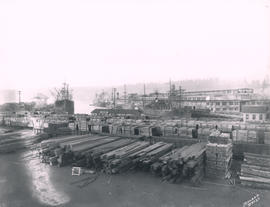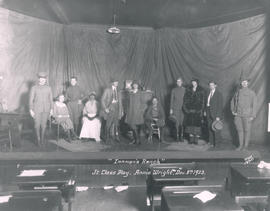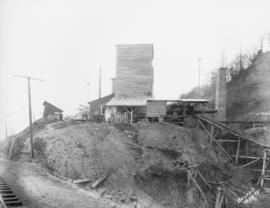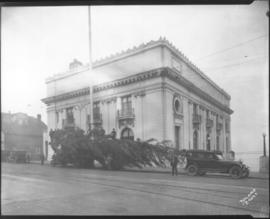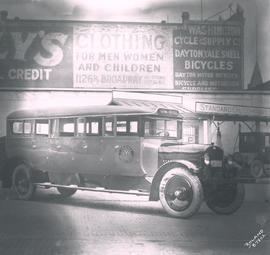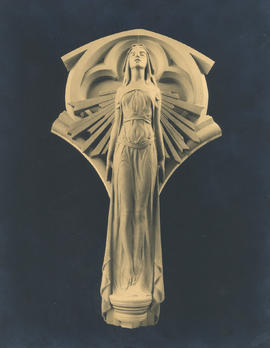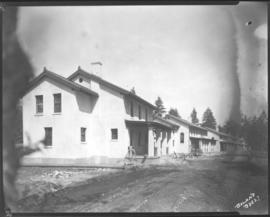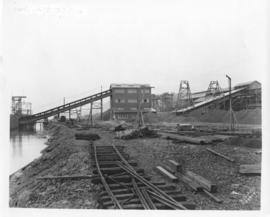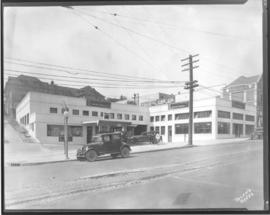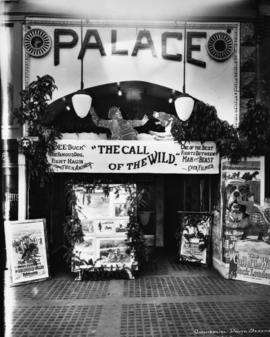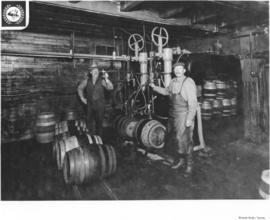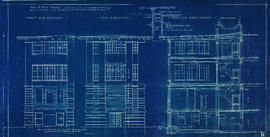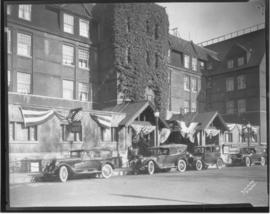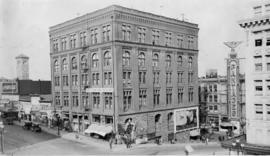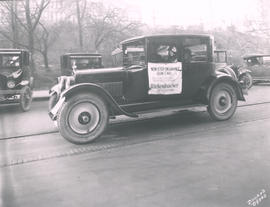Sheriff Tom Desmond and Police Captain Fred Gardner were photographed in early December, 1923, sealing the hood of a black Rickenbacker coupe with General Cords that bears the sign "Non-stop Endurance Run Car/Seven Day Continuous/Driven Only By Women/Rickenbacker of course." The seal on the hood would not be broken by the police officers until the end of the race at 12:31 p.m., 7 days later. The engine would run continuously. The Rickenbacker was named after war ace and racer, Eddie Rickenbacker. Three women, Margaret Hickey, Helen Selden and Irma Mottauare are seated in the car. All daughters of prominent Tacoma families, they would each take 4-hour driving shifts during the 7-day/168 hour endurance run. Women were chosen instead of more experienced male drivers to prove the Rickenbacker's reliability and ease of handling. TPL-180; G11.1-052 (Tacoma Sunday Ledger, 12-2-23, G-5, 8-G, 9-G-articles; Tacoma Sunday Ledger, 12-9-23, G-3; TDL 12-11-23, p. 5-article)
Rickenbacker automobile; Signs (Notices); Desmond, Tom; Gardner, Fred; Hickey, Margaret; Selden, Helen; Mottau, Irma;
